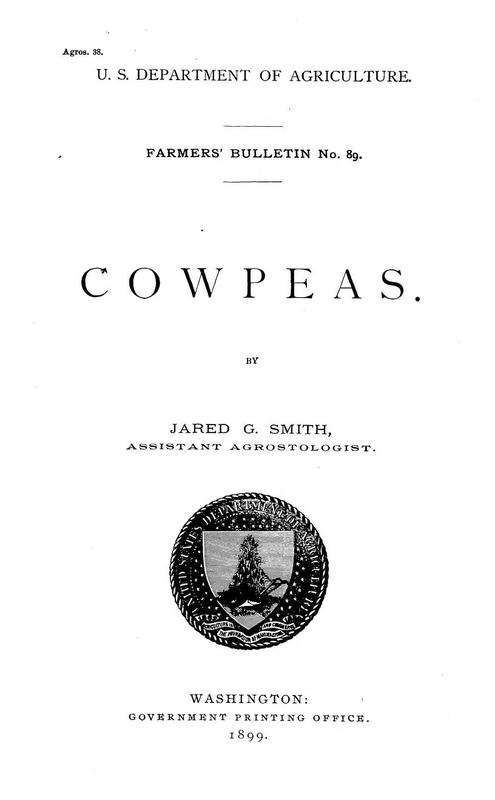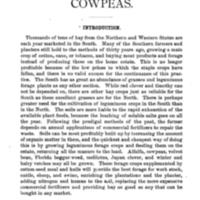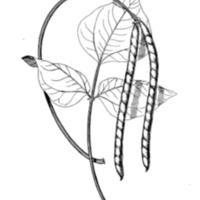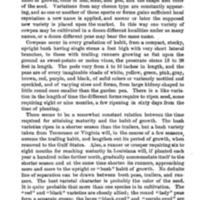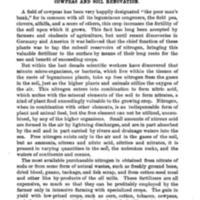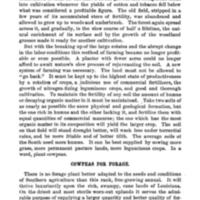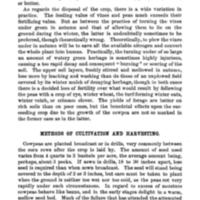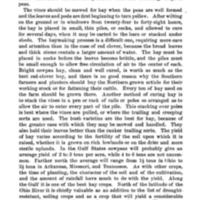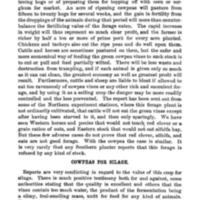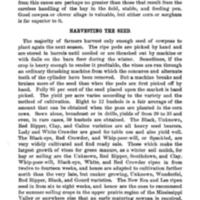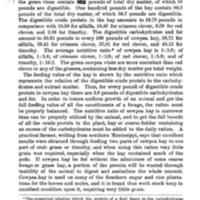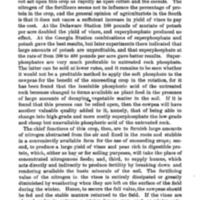Cowpeas
Creator
Date
1899
Excerpt
The chief functions of this crop, then, are to furnish large amounts of nitrogen abstracted from the air and fixed in the roots and stubble in a conveniently available form for the use of succeeding crops; second, to produce a large yield of vines and peas rich in digestible protein, which, either as hay or for soiling purposes, will take the place of concentrated nitrogenous foods; and, third, to supply humus, which acts directly and indirectly to produce fertility by breaking down and rendering available the basic minerals of the soil. The fertilizing value of the nitrogen in the vines is entirely dissipated or greatly diminished by weathering when they are left on the surface of the field during the winter. Hence, to secure the full value, the cowpeas should be fed and the stable manure returned to the field. If the vines are plowed under in autumn, a winter forage crop, such as winter oats, crimson clover, rye, or vetches, should be planted to prevent the leaching and washing action of the winter rains.
Title
Cowpeas
File(s)
Cowpeas Cover.jpg
(image/jpeg)
Cowpeas TOC.jpg
(image/jpeg)
Cowpeas 1.jpg
(image/jpeg)
Cowpeas 2.jpg
(image/jpeg)
Cowpeas 3.jpg
(image/jpeg)
Cowpeas 4.jpg
(image/jpeg)
Cowpeas 5.jpg
(image/jpeg)
Cowpeas 6.jpg
(image/jpeg)
Cowpeas 7.jpg
(image/jpeg)
Cowpeas 8.jpg
(image/jpeg)
Cowpeas 9.jpg
(image/jpeg)
Cowpeas 10.jpg
(image/jpeg)
Cowpeas 11.jpg
(image/jpeg)
 An official website of the United States government.
An official website of the United States government.


